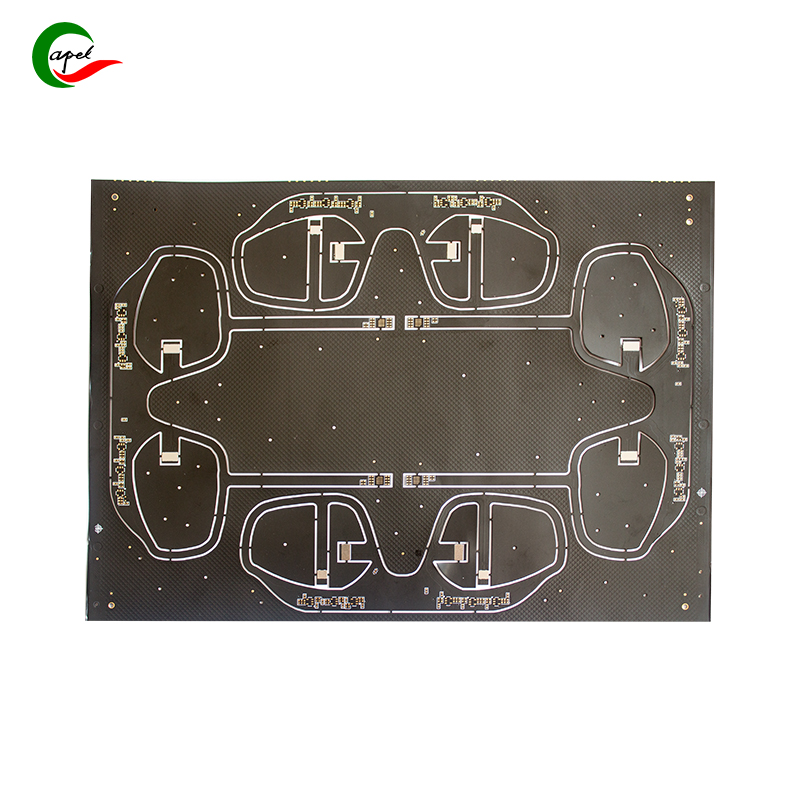Date: 2025-10-21
If you've ever inspected laser-cut flexible PCB edges under a microscope, you've seen them - those tiny, almost invisible protrusions that can wreak havoc on your circuit reliability. I remember a medical device project where micron-scale burrs caused intermittent shorts between 0.2mm spaced traces, leading to a costly redesign and production delay.
The truth is, laser cutting inherently creates burrs. The goal isn't to eliminate them entirely (nearly impossible) but to manage them effectively so they don't impact your product's performance or reliability.
Understanding the root causes helps prevent them from occurring in the first place:
Laser Parameter Issues
We've found that power settings above 10W for standard 25μm copper/PI stacks almost guarantee burr formation. The excess energy melts more material than necessary, which then resolidifies along the cut edge. Similarly, cutting speeds below 10mm/s give the heat more time to spread and create larger burrs.
Material Quality Matters
Not all polyimide is created equal. Lower-grade PI with inconsistent polymer chains or copper with surface impurities tends to create more irregular burrs. We learned this the hard way when switching to a cost-reduced material and suddenly faced a 40% increase in burr-related issues.
Cooling is Critical
The assist gas isn't just for keeping the lens clean - it's crucial for burr prevention. Insufficient gas pressure (below 0.1 bar) fails to effectively eject molten material from the kerf, leaving it to solidify as burrs.
Through extensive trial and error across consumer electronics, medical devices, and automotive applications, we've narrowed down to four reliable methods:
Plasma Deburring - Our Go-To for High Volume
For most applications with 1-3μm burrs on thin materials (≤50μm), oxygen plasma has become our default choice. The process chemically converts the copper burrs to copper oxide that simply gases off.
Key parameters we use:
30-50W power (lower for thinner materials)
15-30 second exposure
0.2-0.5 mbar chamber pressure
The beauty of plasma is its uniformity - it treats the entire surface equally, leaving no directional patterns or missed spots.
Wet Chemical Approach - Cost-Effective Solution
For medium-volume production where equipment cost is a concern, a mild alkaline solution (we use 5% sodium carbonate) effectively dissolves copper burrs without attacking the polyimide.
Our proven recipe:
40-60°C solution temperature
60-120 second immersion
Gentle 50rpm agitation
The critical step here is the rinse - we use three cycles of DI water rinsing followed by immediate drying to prevent any residual chemistry issues.
Mechanical Micro-Grinding - For Stubborn Cases
When dealing with thicker materials (>50μm) or more substantial burrs (up to 4μm), a gentle tumbling process with 1-5μm alumina media can be effective. We've had good results running at 100-200rpm for 5-10 minutes with a mild detergent additive to reduce friction.
UV Laser Re-Cutting - Precision Solution
For medical or aerospace applications where absolute perfection is required, a secondary UV laser pass at low power (3-5W) can clean up burrs without remelting the substrate. The challenge here is alignment - you need camera systems capable of sub-micron precision to follow the original cut line.
Pre-Treatment is Non-Negotiable
Always start with a thorough IPA wipe. Any oil, dust, or fingerprints will interfere with whatever deburring method you choose. For chemical processes, complete drying is essential - moisture dilution ruins consistency.
Process-Specific Considerations
For plasma: Maintain 5-10cm distance from source and use lower power for thin materials
For chemical: Temperature control is crucial - above 60°C causes PI swelling
For mechanical: Use soft plastic tumblers, never metal, and consider media mixing
For UV laser: Always test on samples first - the margin between deburring and damage is thin
Post-Treatment Validation
We use three validation methods:
500-1000x microscope inspection (burr height ≤0.5μm acceptable)
Insulation resistance testing (≥10⁹Ω between adjacent traces)
Simple tape test (3M 610 tape should come away clean)
Overprocessing
Plasma beyond 30 seconds or chemical immersion beyond 2 minutes starts etching the substrate itself. More isn't better - it's destructive.
Method Mismatch
Using mechanical grinding for sub-2μm burrs is overkill and risks substrate damage. Similarly, trying to use plasma on 5μm+ burrs requires impractically long cycle times.
Inadequate Rinsing
Chemical residue left on edges creates new "sticky" contamination that's often worse than the original burrs.
Choosing the right deburring method comes down to:
Burr size (plasma for <3μm, chemical for 2-5μm)
Production volume (plasma for high volume, chemical for medium)
Material thickness (mechanical for thicker materials)
Application requirements (UV laser for medical/aerospace)
The goal isn't absolute perfection - it's achieving a level of edge cleanliness that ensures your flexible PCB will perform reliably throughout its intended lifespan. By matching the method to your specific needs and executing with discipline, you can eliminate burr-related failures and build more reliable products.
related link:
Kaboer manufacturing PCBs since 2009. Professional technology and high-precision Printed Circuit Boards involved in Medical, IOT, UAV, Aviation, Automotive, Aerospace, Industrial Control, Artificial Intelligence, Consumer Electronics etc..